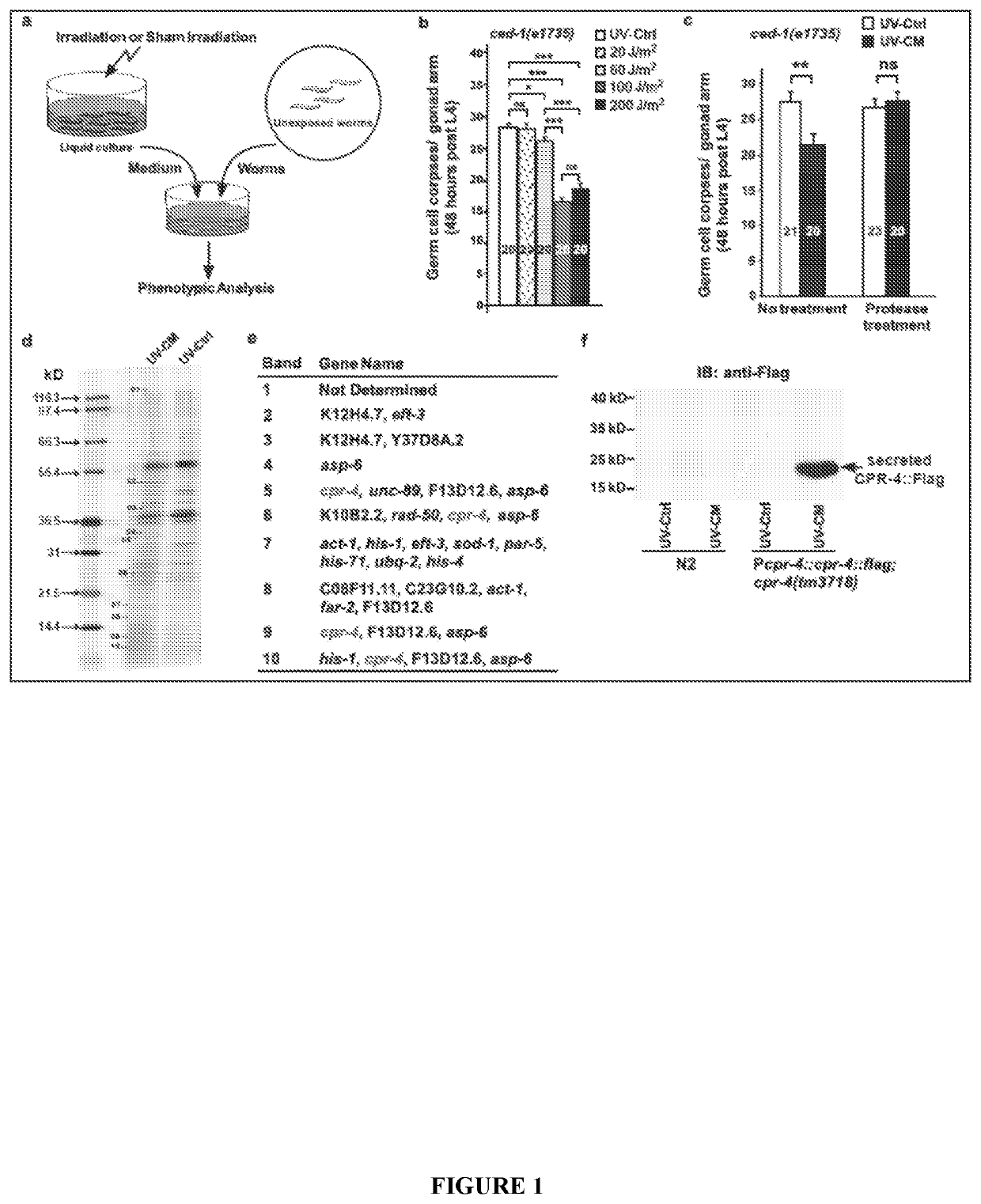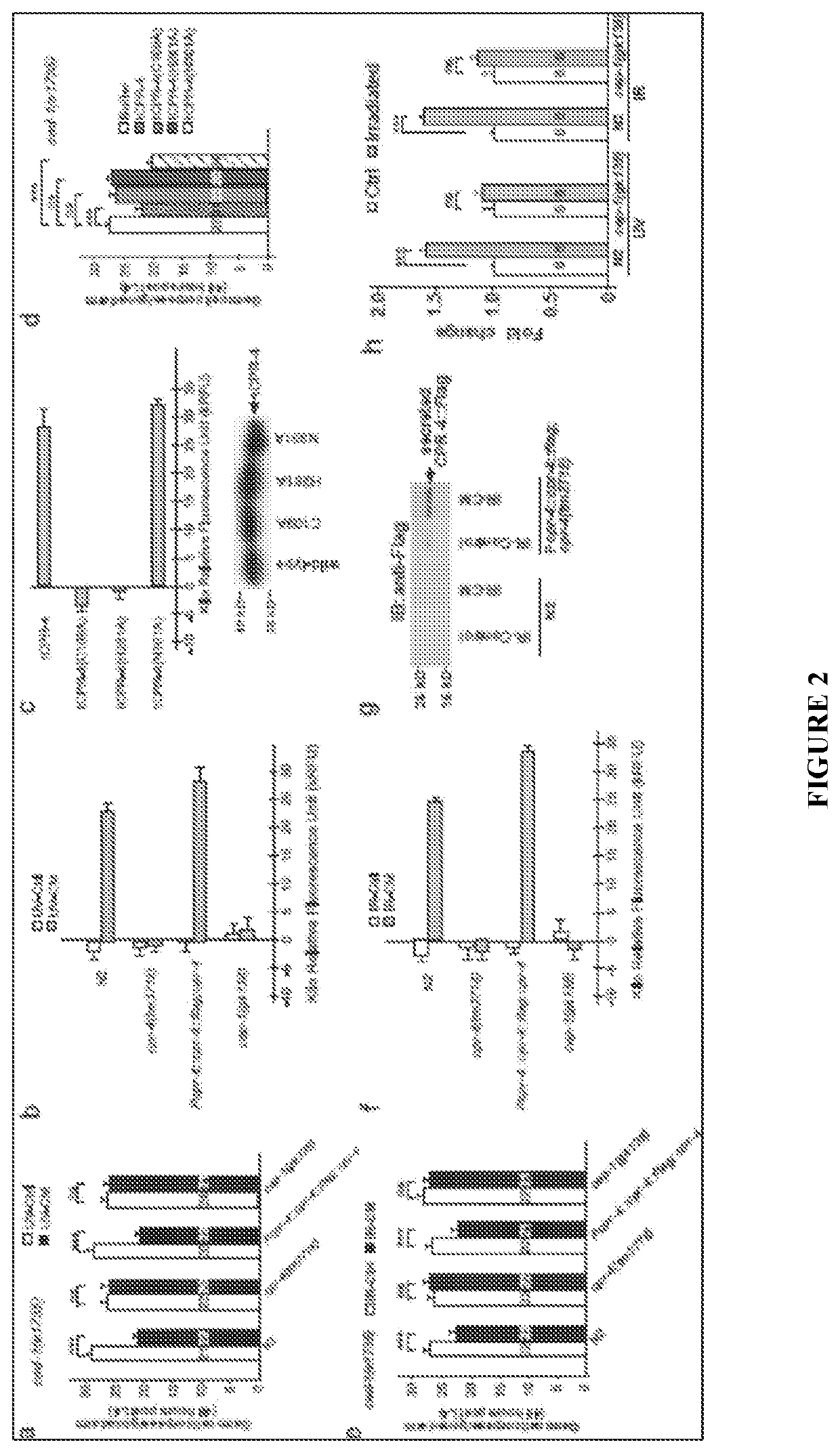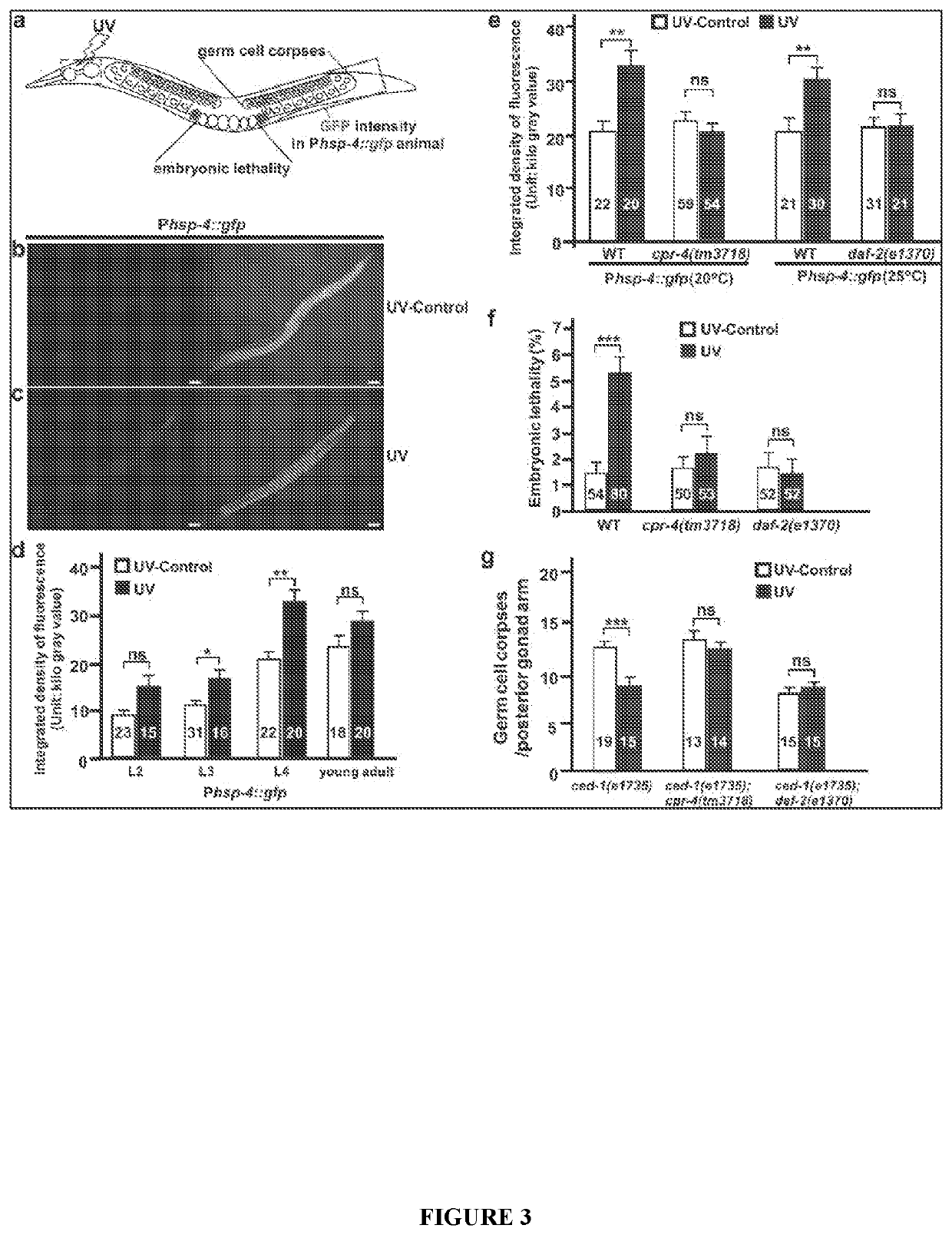Compositions and methods for preventing and treating radiation-induced bystander effects caused by radiation or radiotherapy
a technology of radiation or radiotherapy and compositions, applied in the direction of drug compositions, dermatological disorders, instruments, etc., can solve the problems of ribe factor molecular identity and their mechanism of action, and the inability to effectively reduce or prevent side effects
- Summary
- Abstract
- Description
- Claims
- Application Information
AI Technical Summary
Benefits of technology
Problems solved by technology
Method used
Image
Examples
example 1
ple Illustrates the Production and Excretion of One or More RIBE Factors in Response to Irradiation
[0430]The present inventors tested whether C. elegans could serve as an animal model to study RIBE using UV radiation, because UV-induced damage in C. elegans is well characterized. Wild-type (N2) animals cultured in the liquid S-Medium were irradiated with 100 J / m2 UV or sham-irradiated. This UV dosage induced significant embryonic lethality (FIG. 5a), which was exacerbated in cep-1(gk138) animals defective in the C. elegans p53 homolog CEP-1 that is involved in DNA damage repair. The medium used to culture irradiated and sham-irradiated animals was called “UV conditioned medium” (UV-CM) and “UV control” (UV-Ctrl), respectively, and used to treat unexposed animals (FIG. 1a). N2 animals treated with UV-CM showed increased embryonic lethality compared with those treated with UV-Ctrl (FIG. 5b), indicating that UV-CM contains substances capable of inducing damage in unexposed animals. UV-...
example 2
ple Illustrates the Identification of the RIBE Factors as Proteins Generated by Irradiated Cells and not Other Factors
[0431]The present inventors probed the nature of RIBE factors by treating UV-CM with enzymes that destroy DNA, RNA or proteins. The apoptosis-inhibitory activity in UV-CM was resistant to treatment of DNase or RNase (FIG. 6a, b), but obliterated by the Trypsin protease (FIG. 1c), suggesting that the RIBE factors are proteins. UV-CM collected from cell-death defective ced-3(n2433) animals, germline-deficient glp-1(e2141) animals, or N2 animals fed with dead bacteria retained the death inhibitory activity (FIG. 6c-f), indicating that the RIBE factors are unlikely factors generated by bacteria or byproducts of cell death induced by radiation and can be made without the germline.
[0432]Using 10 kD molecular weight cut-off filter units, the present inventors separated UV-CM into two fractions, one containing proteins likely larger than 10 kD and one with proteins smaller t...
example 3
ple Illustrates the Identification of CPR-4 as a RIBE Factor
[0433]The present inventors used RNA interference (RNAi) to examine if one of the 19 genes is responsible for RIBE. UV-CM from cpr-4 RNAi-treated animals displayed a greatly reduced RIBE activity, whereas UV-CM from animals treated with RNAi of other genes retained the RIBE activity (FIG. 7b). cpr-4 encodes a homolog of the mammalian cathepsin B lysosomal protease, which is secreted to act as an extracellular protease. Because a deletion mutation (tm3718) in cpr-4, which removes one third of the CPR-4 protein (FIG. 9a), obliterated the RIBE activity and a single-copy integrated transgene carrying a cpr-4 genomic fragment with a carboxyl terminal Flag tag (Pcpr-4::cpr-4::flag) restored RIBE to cpr-4(tm3718) animals (FIG. 2a), cpr-4 is required for this RIBE activity in UV-CM.
PUM
| Property | Measurement | Unit |
|---|---|---|
| body weight | aaaaa | aaaaa |
| body weight | aaaaa | aaaaa |
| weight | aaaaa | aaaaa |
Abstract
Description
Claims
Application Information
 Login to view more
Login to view more - R&D Engineer
- R&D Manager
- IP Professional
- Industry Leading Data Capabilities
- Powerful AI technology
- Patent DNA Extraction
Browse by: Latest US Patents, China's latest patents, Technical Efficacy Thesaurus, Application Domain, Technology Topic.
© 2024 PatSnap. All rights reserved.Legal|Privacy policy|Modern Slavery Act Transparency Statement|Sitemap



